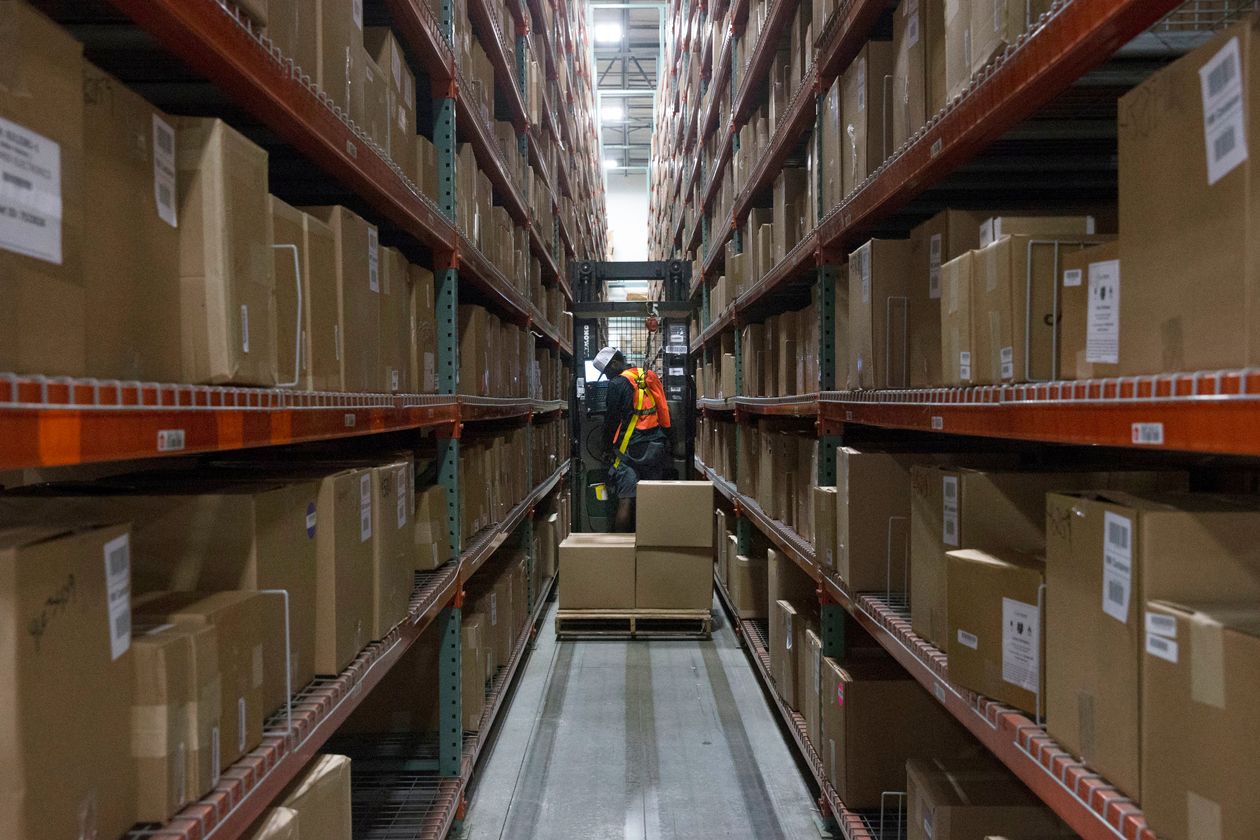
Pandemic-driven shift to online shopping has companies moving goods closer to population centers
Retailers are hustling to find more space for goods before an expected crush of online orders this fall swamps already-strained logistics networks.
Companies expect online sales “to be one of their primary movers” in the fourth quarter, said Zach Thomann, executive vice president of online fulfillment provider PFS, a division of PFSWeb Inc. whose customers include cosmetics merchants Kiehl’s and Shiseido Co. and sports apparel brand Champion.
Clients are shifting inventory to additional locations to speed delivery of online purchases, Mr. Thomann said, and are also looking to use retail stores to fulfill orders. PFS expects a large portion of holiday sales to migrate online, he said, prompting the company to scout for more warehouse space, plan additional hiring for the peak season for e-commerce fulfillment and consider adding automation to increase capacity.
Merchants and brands that met with soaring e-commerce demand during lockdowns expect consumers to stick to online shopping as the coronavirus pandemic continues its grip on the U.S.
Sixty percent of consumers plan to shop less in stores this holiday season due to fear of Covid-19 exposure, according to a survey of more than 1,000 people by e-commerce logistics company Radial Inc. The company said its top retail customers shipped 1 million more orders in
April and May than during the five-week holiday peak last year.
Consumers spent a record $73.2 billion online in June, up 76% from June 2019, according to Adobe Analytics, which tracks activity on thousands of websites. Online shopping is now above typical holiday levels, Adobe said.
The surge of online orders is boosting warehouse demand, especially for locations near major population centers, as companies adjust supply chains in which goods flowed mostly to stores.
E-commerce was the largest driver of second-quarter industrial leasing activity, accounting for 31 million square feet, up from 24.9 million square feet the previous quarter, according to real-estate firm Jones Lang LaSalle Inc. Logistics and distribution users, the second-largest category in the second quarter, accounted for 15.3 million square feet, while leasing for traditional retail use came in fifth, at 11 million square feet.
Demand for temporary warehouse space “is way up” as retailers plan for strong online sales in the fourth quarter, said Karl Siebrecht, chief executive of on-demand warehousing provider Flexe Inc., which connects businesses to warehouses with space to share.
Retailers are locking in additional fulfillment capacity for holiday items like toys. They are also adding storage space for essential goods such as paper towels, Mr. Siebrecht said, “because the overall network is forecast to be full.”
Source: Wall Street Journal
